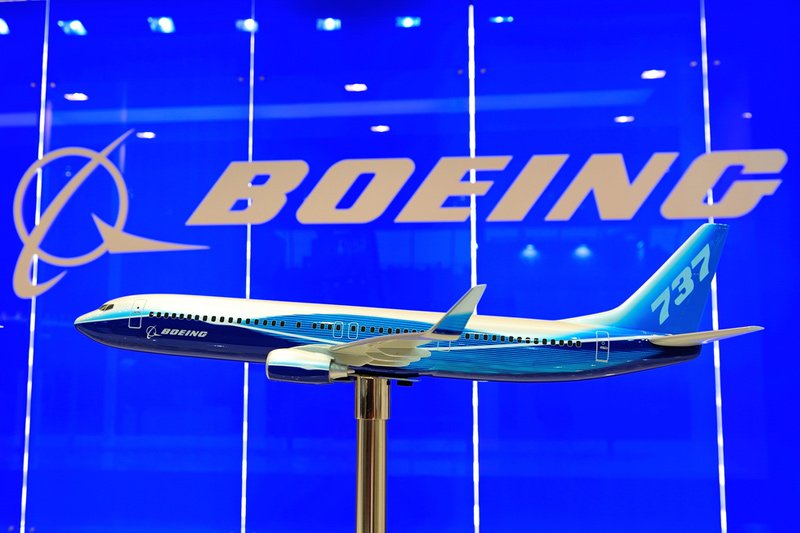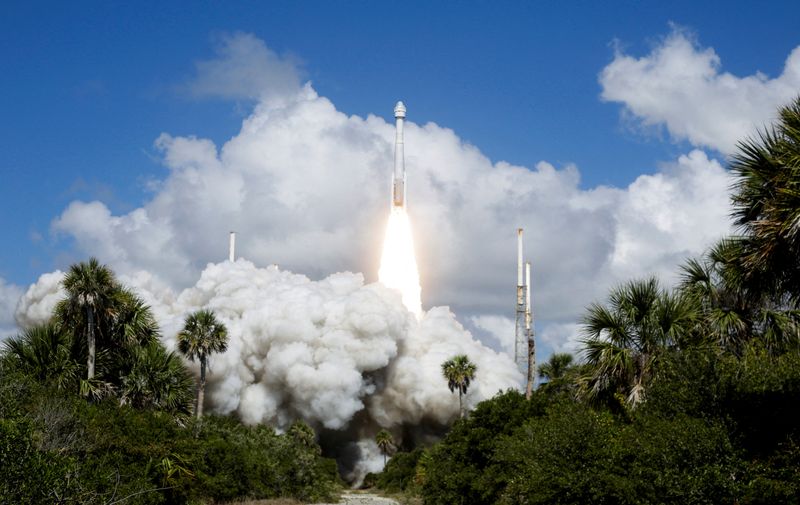Boeing Starliner capsule nears first crewed ISS docking as new points come up By Reuters

By Joey Roulette and Steve Gorman
(Reuters) -Boeing’s new Starliner capsule and its inaugural two-member NASA crew neared ultimate method to the Worldwide Area Station for docking on Thursday, a key take a look at in proving the vessel’s flight-worthiness and sharpening Boeing (NYSE:)’s competitors with Elon Musk’s SpaceX.
The spacecraft was continuing to its deliberate rendezvous regardless of an earlier lack of a few of its steerage thrusters attributable to a helium propulsion leak, which NASA and Boeing stated mustn’t compromise the mission.
The CST-100 Starliner, with veteran astronauts Barry “Butch” Wilmore and Sunita “Suni” Williams aboard, was attributable to arrive on the orbiting platform after a flight of roughly 25 hours following its launch from Cape Canaveral Area Drive Station in Florida.
The reusable gumdrop-shaped capsule, dubbed “Calypso” by its crew, was lofted into house on Wednesday atop an Atlas (NYSE:) V rocket furnished and flown by Boeing-Lockheed Martin’s United Launch Alliance three way partnership.
It was scheduled to autonomously dock with the ISS whereas each are orbiting some 250 miles (400 km) above Earth at roughly 12:15 p.m. ET (1615 GMT).
The spacecraft’s method to the ISS was being livestreamed on a NASA webcast, which confirmed video pictures of the capsule captured by a digicam aboard the house station.
As soon as securely coupled to the house laboratory, Wilmore and Williams would conduct a sequence of ordinary procedures, resembling checking for airlock leaks and pressurizing the passage between the capsule and the ISS, earlier than opening the entry hatches.
They’d be welcomed aboard by the outpost’s present seven resident crew members: 4 fellow U.S. astronauts and three Russian cosmonauts.
Plans name for Wilmore and Williams to stay aboard the station for about eight days, then depart on a return flight that may take Starliner on a fiery reentry again by Earth’s ambiance and finish with a parachute and airbag-assisted touchdown within the U.S. Desert Southwest, a primary for a crewed NASA mission.
On its voyage to the ISS, helium leaks had been detected on Starliner’s propulsion system, knocking out a number of the 28 thrusters utilized by the capsule to maneuver in house. The astronauts stay protected, and the spacecraft has backup thrusters to compensate for the loss, in accordance with NASA and Boeing.
Starliner makes use of helium so as to add stress to the propellant for its thrusters. NASA and Boeing didn’t specify the positions of the downed thrusters or how rapidly helium was leaking.
NASA mission managers early on Thursday morning gave Boeing the inexperienced mild to proceed to rendezvous.
YEARS OF TECHNICAL PROBLEMS
The Starliner launch on Wednesday adopted years of technical issues, numerous delays and a primary profitable 2022 take a look at mission to the orbital laboratory with out astronauts aboard.
Final-minute glitches had nixed the Starliner’s first two crewed launch makes an attempt, together with a helium leak discovered on the capsule’s propulsion system that officers later decided was not critical sufficient to warrant a mechanical repair.
NASA and Boeing officers on the time pointed to a defective seal on one thruster element that was failing to maintain the helium inside.
Boeing constructed Starliner beneath contract with NASA to compete with SpaceX’s Crew Dragon capsule, which since 2020 has been the U.S. house company’s solely automobile for sending ISS crew members to orbit from American soil. The present mission marks Starliner’s first take a look at flight with astronauts aboard, a requirement earlier than NASA can certify the capsule for routine astronaut missions.
Chosen as crew for the pivotal flight had been two NASA veterans who’ve beforehand logged 500 days in house between them: Wilmore, 61, a retired Navy captain and fighter pilot, and Williams, 58, a former Navy helicopter take a look at pilot with expertise flying greater than 30 totally different plane.

Getting Starliner up to now has been a fraught course of for Boeing beneath its $4.2 billion, fixed-priced contract with NASA, which desires the redundancy of two totally different U.S. rides to the ISS.
The Starliner is a number of years delayed and greater than $1.5 billion over funds. In the meantime, Boeing’s business airplane manufacturing operations have been rocked by a sequence of crises involving its 737 MAX jetliners.






